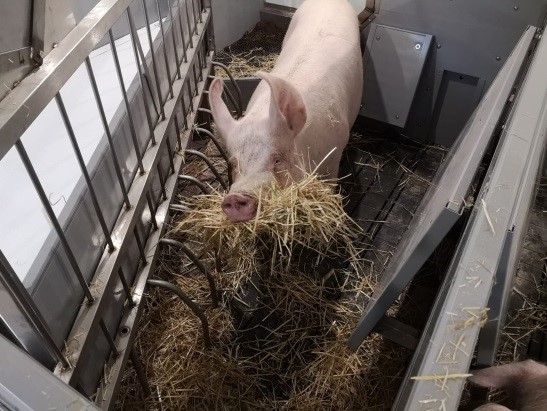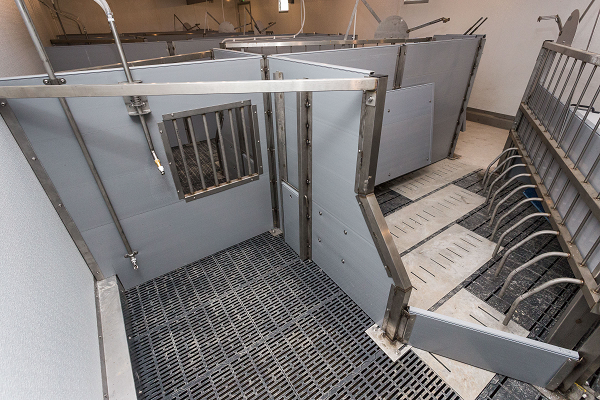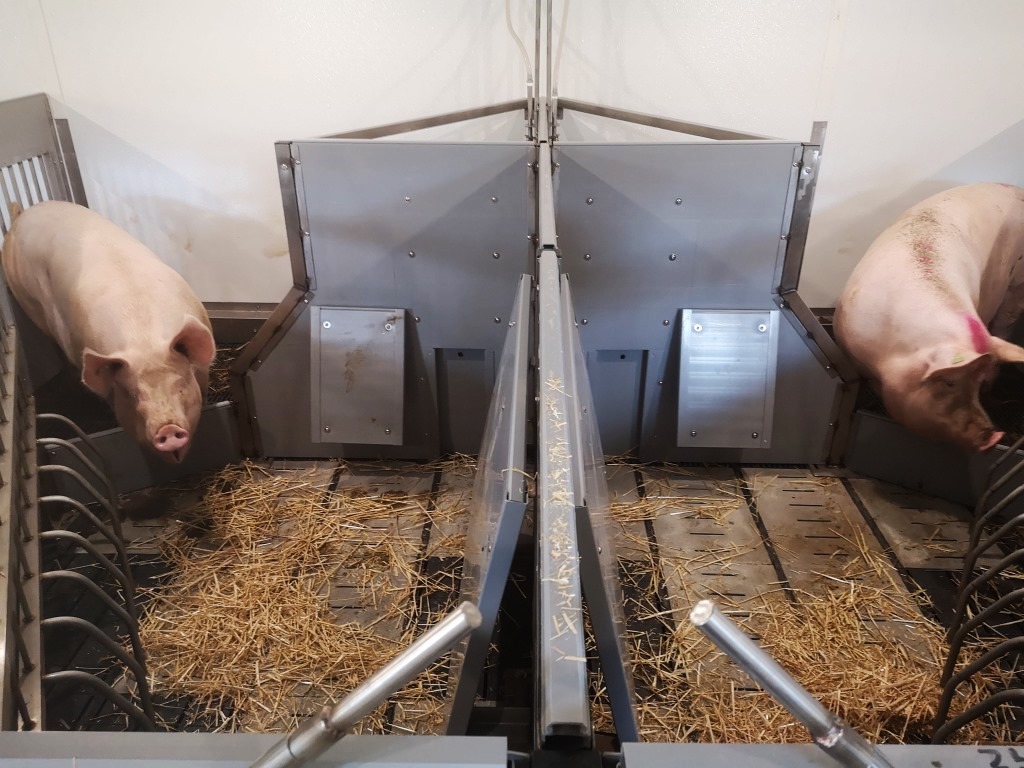



PigSAFE: the result of 40 years of research into free farrowing
PigSAFE is the culmination of years of research into free farrowing, but what benefits can the Piglet and Sow Alternative Farrowing Environment have for you and your herd?Emma Baxter is a research scientist at Scotland’s Rural College (SRUC) with expertise in animal welfare and behaviour, and interests in integrated pig science. Her PhD work investigated the behavioural and physiological indicators of piglet survival which involved studying survival in a range of farrowing environments, including working on commercial outdoor units. Part of this research included using genetic selection strategies to improve survival. The PigSAFE project followed on from this work.
PigSAFE stands for Piglet and Sow Alternative Farrowing Environment. It is a farrowing and lactation pen developed by SRUC and Newcastle University, with industry and NGOs involved in the research programme, to re-design the farrowing environment to optimise animal welfare and economics.
The first phase of this project involved designing a prototype, the second phase concentrated on supporting uptake, including collating free-farrowing information into a web-based platform (www.freefarrowing.org) and gathering on-farm data regarding selecting suitable sows for loose farrowing.
SRUC has a long history of conducting research into the behaviour and welfare of pigs in close confinement systems (almost 40 years of research), culminating in the development, dissemination and implementation of free farrowing systems like PigSAFE.
The Pig Site speaks to Emma about the development of PigSAFE and what benefits the system can offer for sows, piglets and stockworkers.

Free farrowing vs confinement is a controversial subject in the pig industry but is there a right or a wrong way to rear sows and piglets?
Any system that involves close confinement of an animal is not ethical. Farrowing crates are economical and efficient: when they were first introduced their remit was to reduce piglet mortality by controlling sow movements, whilst also allowing more targeted heating and easy hygiene. However, there is a strong scientific evidence base demonstrating the welfare detriments of close confinement, particularly for the sow. We know that preventing animals from expressing behaviours that are highly motivated and necessary for biological functioning impacts on their physical and psychological wellbeing.
Domestic pigs have not lost their desire or ability to display nest-building behaviour which is of high importance in the preparation for farrowing. Good nest-building behaviour, which requires substrate and freedom of movement, enhances positive maternal behaviours. When sows are housed in farrowing crates they are unable to fully nest-build and they show higher stress levels than those housed in loose pens. They are also more likely to show negative maternal behaviours such as savaging. This obviously impacts on the piglets.
There is also work demonstrating that actually providing for the sow’s innate behavioural need to perform nest-building is beneficial for piglets and therefore the farmer. Nest building increases oxytocin levels, increasing piglet suckling success and heightening piglet immunity. Having a more dynamic neonatal environment for piglets has also been shown to be beneficial for social development and improves resilience.
Designing an environment that can incorporate the reason the crate was introduced originally (to protect piglets) whilst giving the sow greater freedom to perform natural behaviours and promote good maternal behaviour is the target for good rearing conditions.

What does the PigSAFE farrowing station consist of?
The most important concept of PigSAFE is that it is designed in order to stimulate good maternal behaviour, giving the sow optimal, functional spaces whilst still providing for stockperson safety and piglet protection.
The sow is given:
- Freedom of movement at all times.
- Opportunity to nest-build.
- Enclosed nest site.
- Sloped walls for support in lying down situations.
- Opportunity to contact neighbouring sows.
- Opportunity to dung away from nest site.
- Opportunity to feed away from dunging and resting areas.
The piglets are given:
- Improved udder access.
- Sloped walls for protection during sow lying events.
- Appropriate creep environment.
- Reduced spread of infection between pens.
- Opportunity to experience an enriched environment.
- Opportunity to dung away from resting areas.
The staff are assured:
- Fast and safe inspection of piglets.
- Easy maintenance of good hygiene in the pens (separate dunging area).
- Easy provision of nest building materials.
- Ability to separate sow from piglets and staff for husbandry procedures.
- Multiple access points for easy inspection and movement of animals.
Do PigSAFE stations meet higher welfare assurance scheme standards?
In principle, PigSAFE would pass the criteria for any standard that requires the sow to be full free-farrowing (zero-confinement). Each individual assurance scheme will have their own standards which the whole farm will need to pass before any product from that system gets approved – but as PigSAFE has some of the highest welfare standards for indoor production it is likely to attract a premium brand.

How do you plan to further develop PigSAFE in 2019 onwards?
PigSAFE is installed in a number of units commercially in the UK and abroad and there is a commercial demonstration unit (part funded by CIEL (Centre for Excellence in Livestock)) in Edinburgh that hosts a number of visits for those interested in building or learning more about the research. Our final design performs well, we achieve good piglet survival, heavy weaning weights and the sows wean in good condition. Our current research looks at optimising management inputs and we have just finished a Sainsbury’s funded project looking at selecting the right sow for free farrowing.
We are also looking more closely at the long-term benefits for piglets reared in enriched neonatal environments including how positive welfare can promote healthy maturation. Given the challenges facing the industry with antimicrobial resistance, finding alternative ways to enhance resilience in the herd without the reliance on antibiotics is an important goal and one which high welfare farrowing and lactation systems could achieve.
With regards to maintaining ambient temperatures for sows, the PigSAFE has been tested in a Southern hemisphere climate where the extremely hot weather conditions are a challenge. We are working with colleagues in Australia to install cooling plates and additional ventilation options for those periods of extreme heat.









